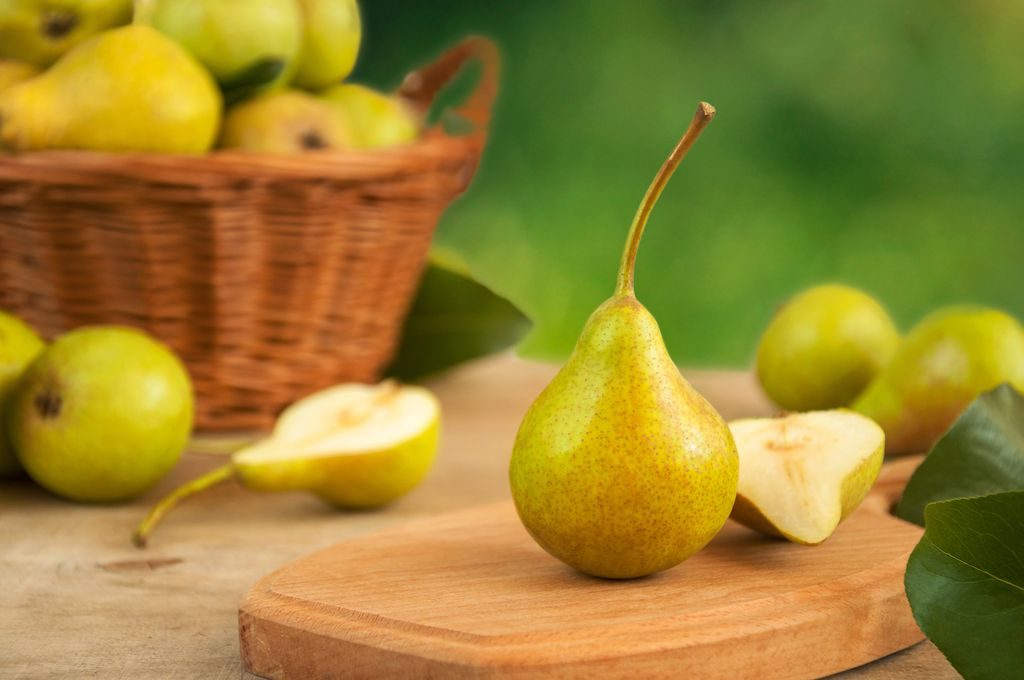Pear
Pears are a type of fruit grown on trees. Most of them have a distinctive bell shape and are either green or yellow in colour.

Pears are a type of fruit grown on trees. Most kinds of pear have a distinctive bell shape, meaning they are round on the bottom and it tapers off at the top. The colour varies depending on the variety, some pears are light green while some are a deep red colour. They are sold fresh, dried, canned or used in making preserves like jams and chutneys.
Pears are commonly used in baking, as a flavouring for sweets and in the production of alcoholic drinks such as cider and even wine.
Types of Pears
These are hundreds of types for pears in the world so here are some of the most popular varieties available.
- Beurré Bosc – originally cultivated in France Beurré bosc is grown in Europe, Australia and in Northan America. Their flesh tends to be hard with dark brown skin. When ripe they are juicy, crunchy and sweet.
- Doyenne du Comice – Native to Britten Comice pears have a super soft flesh and skin. They have a golden colour with a slight reddish tinge.
- Josephine – Have a green-yellow skin when ripe. The flesh starts off firm and crunchy when young and becomes soft, juicier as they ripen.
- Williams’ – Grown in the United States and Canada this pear is often eaten raw but holds its shape well when baked or poaching. It is also a common choice for canning.
- Sensation – this Australian pear has a bright-red skin, it has a soft texture similar to
- Williams’.
- Winter Nelis – have green-yellow skin which is covered with brown spots. They are juicy and have a rich and sweet flavour.
Pear Recipes
- Pear crumble – pears make a lovely crumble base, they are sweet, soft and wonderfully aromatic.
- Pears in cakes – pears can both be a topping and an ingredient in cake making! Pear upside-down cake is made by baking the fruit on the bottom and flipping it just before serving. Pears also go well with flavours like ginger, lemon and chocolate.
- Pears in tarts – Tarte tatins and frangipanes both go amazingly with the fresh and aromatic pears and make fantastic desserts.
- Pear juice – is a really refreshing beverage. It can also be used in smoothies or in making pear sorbet.
- Salads – the sweetness or pears are a great addition to salads. They are best coupled with tart ingredients like blue cheese and walnuts.
Pear Nutritional Infomation
Pears are a good source of fibre which helps your body with digestion and eases constipation.
Pears contain high levels of vitamin C and K, and copper which are strong health benefitting antioxidants. They help our body fight off free radicals which can cause cell damage.
Per 100g of ripe uncooked pear there are about 58 calories.




